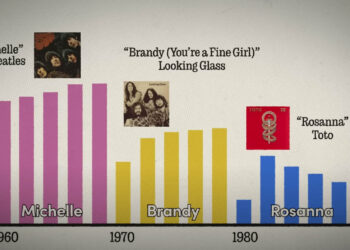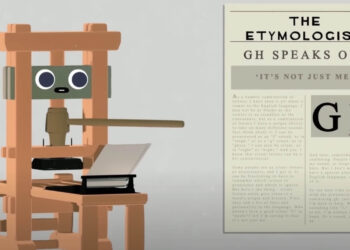
Image via Wikipedia
The album cover is iconic. In the foreground, a man lounging under a sun umbrella with a drink and newspaper while his background shows a grey, dystopic, industrial wasteland. The image is powerful and those of you who used to collect vinyl will remember the British rock band Supertramp’s 1975 album, Crisis? What Crisis? The title alone conveys a blatant sense of denial and disregard for the sunbather’s surrounding. He’s out to catch some rays, then return to his drab and futile existence. Crisis? What Crisis?
With the risk of depicting myself as the sunbather, I’m becoming more skeptical of the perpetual “crisis” we seem to be in. The “crisis in scholarly communication” is not a new phenomenon. In fact, it shows up routinely in the literature from the late 1920s onward. How is it possible to be in a perpetual crisis? Why a “crisis” and not merely a “systemic problem” in scholarly communication? Why is the word “crisis” such a powerful word?
A crisis requires a frame of liability and accountability. The Exxon Valdez runs aground in Alaska spilling millions of liters of oil and it is easy to point a finger at a drunk captain. A faulty o-ring is the cause of the Challenger space shuttle disaster. When a crisis takes place, someone or something is always to blame: If it is not apparent, convenient scapegoats are brought in. It is much more difficult to talk about systemic problems in an organization – why there are barriers to information flow, why some organizations are underfunded, understaffed, and lack regulation. These are complex stories to tell, and they often don’t satisfy our psychological need for accountability and closure.
The “crisis in scholarly communication” points its accountability finger directly at greedy commercial publishers. In doing so, it ignores all of the other players (authors, deans, librarians, funding agencies, etc.), who together create an environment which allows these publishers to thrive. Most of us, I hope, understand the complexity of this economy. It is vast, interrelated, and not very easy to understand in its entirety. This does not make a simple story, which is undoubtedly why simple accountability narratives are used in its place.

Discussion
7 Thoughts on "Crisis? What Crisis?"
Phil Davis suggested I post an excerpt from a talk I gave at an ARL/AAUP/ACLS that is relevant to his posting about the language of “crisis.” Here is the first part of the talk, and the link to the full talk is:http://www.arl.org/resources/pubs/specscholmono/thatcher~print.shtml
There are many things awry in the system of scholarly communication today, but I want to focus my remarks here on just two of them: the inequities that now exist more than ever among different academic specialities in the prospects for publication of books; and the need to view scholarly communication as a system of many interacting parts if any viable long-term solution to the crisis is to be found.
But first it may be useful to offer some historical perspective on this so-called crisis. It has, in fact, been with us for so long now that maybe “crisis” is really a misnomer–“chronic illness” may be a more accurate description. The librarians in this audience will be familiar with a now classic NSF-funded study by Bernard Fry and Herbert White published in 1975 that found, for the period 1969-1973, that the ratio of book to journal expenditures in the largest academic libraries had dropped over that five-year period from better than 2 to 1 to 1.16 to 1 (Fry/White 1975: 61), with every expectation that this trend would only get worse–as, indeed, it has. (Recent ARL statistics show the decline in monograph purchases since 1986 among these libraries to have been nearly 25%.) Fry and White’s prognosis for university presses was particularly gloomy: their situation, they said, “can be described, without exaggeration, as disastrous. Already heavily encumbered by operating deficits…, university presses appear…to be sliding even more rapidly toward financial imbalance” (Fry/White 1975: 11).
This precarious situation was viewed with alarm by university presses themselves at this time. A series of articles appeared in the journal, Scholarly Publishing, in April 1972, July 1973, and April 1974 based on successive surveys of presses covering the years 1970-1974. The first article, entitled “The Impending Crisis in University Publishing,” “clearly indicated that presses were in the midst of a period of extraordinary financial stress, which posed a serious threat to the continuing survival of many of them” (Becker 1974: 195). The next two articles bore the titles “The Crisis–One Year Later” and “The Crisis–Is It Over?” The somewhat encouraging conclusion of the last article in this series was that, “except for the smaller ones, presses for the most part have managed to survive their financial difficulties quite well by making a host of adjustments, including radically increased book prices, substantially lower discounts, economies achieved in book production costs, slashing staffs, publishing more books with sales potential and fewer which cannot pay their own way, special inventory sales, and so forth.” But, the author wondered, how much more can such methods be used without becoming at some point self-defeating. Ominously and–as we can now see with the wisdom of hindsight–presciently, he ended by pointing to “the increasing danger that presses will turn more and more to publishing books on the basis of saleability rather than scholarly merit.” And, while noting the temporary mitigating effects that a generous grant from the Mellon Foundation to presses for publishing books in the humanities might have, he asked: “But what then?” (Becker 1974: 202)
Phil, you are right, the problems are systemic, and that gets lost in the noise. For many years however, the publisher perspective was the only one given credence at least through the 70’s and much of the 80’s which was libraries just needed to go get more money. Most librarians believed that too in my experience. That changed because of the blatant behavior of many publishers in the 80’s to profit taking is the problem. It’s taken twenty years for that to become the primary mantra. So maybe we are ready for another shift. The current generation of librarians, for example was brought up through the it’s the publisher’s who are the problem literature. And IMO we are still feeling the effects of the mid to late 80’s profit taking.
So what’s the new paradigm that will take a generation to make it to Conventional Wisdom? Publisher’s lost the last round and we are still feeling the effects of that.
There’s a real possibility today’s almost evangelical concern for OA will become the new CW if it hasn’t already.
It takes that level, almost missionary zeal, to move the system. Where are today’s publishing visionaries who can build a counter perspective? Are they at BMC and Hindawi? Or are they at Sage and Oxford? At Springer and Wiley/Blackwell or Highwire and BEPress? Is it platform or content or a new amalgam of both or something else?
I was thinking about Phil’s post about how something can be called a “crisis” if it goes on for 30+ years, when I saw that this weekend’s news stories were filled with the “oil crisis”. A crisis of about the same vintage (perhaps).
It is interesting to compare the two “crises”. Who plays the role of OPEC, who the role of “Big Oil”, who the role of the oil-guzzling SUVs (I’m in London right now and it seems clear that the SUV is peculiarly American….), who owns the ‘filling stations’, who has nuclear power, who is working on hybrid cars and battery-powered cars, who drives a Prius or a SmartCar, and what the alternative energy sources (and their technological and non-technological barriers to adoption) will be.
Somehow it is always easier to see the solutions in an industry other than one’s own!
John
I took an intellectual property class with undergraduates last year and the chief villain to the “crisis of free music downloads” was the Recording Industry Association of America (RIAA). Nowhere in the discussion were the musicians and bands who sign away their rights to the commercial producers, or individuals who bypass legal paths to obtain music. It was all about “them” and “us” and how music — like information — wants to be free.


